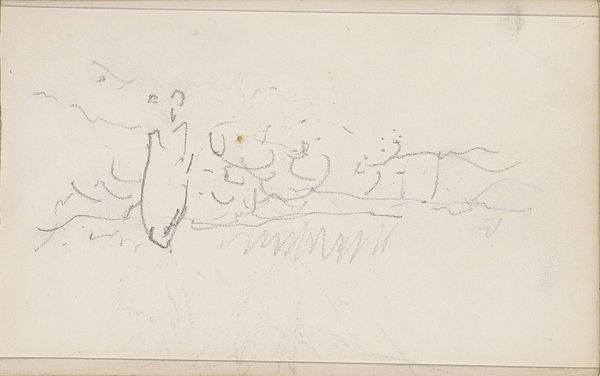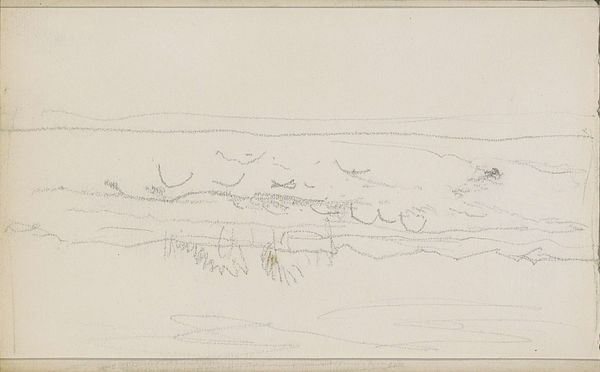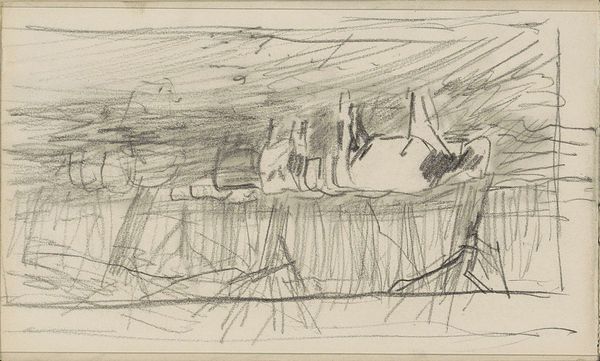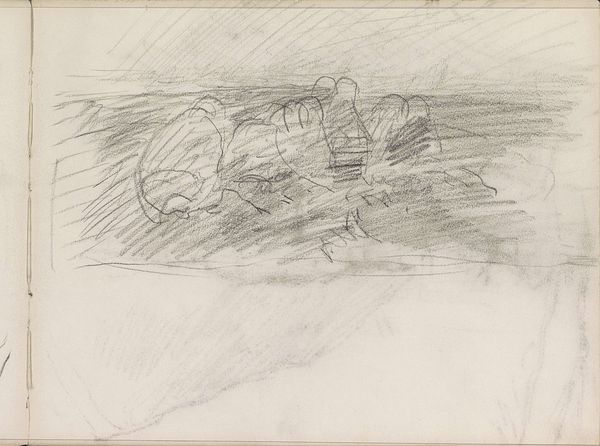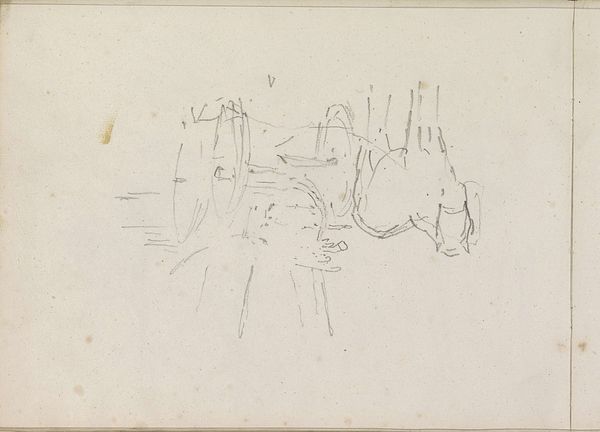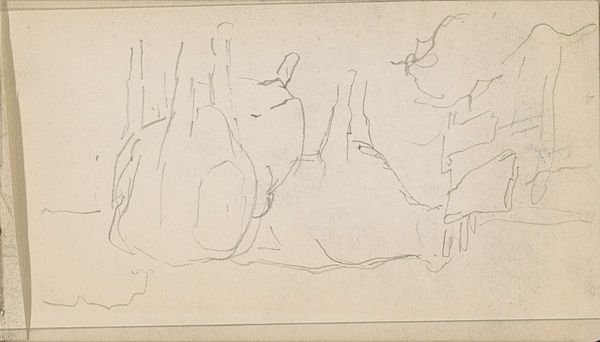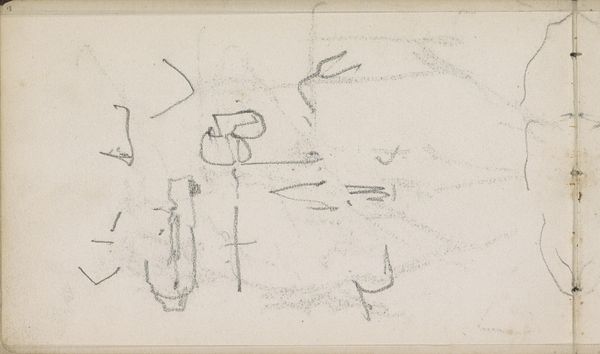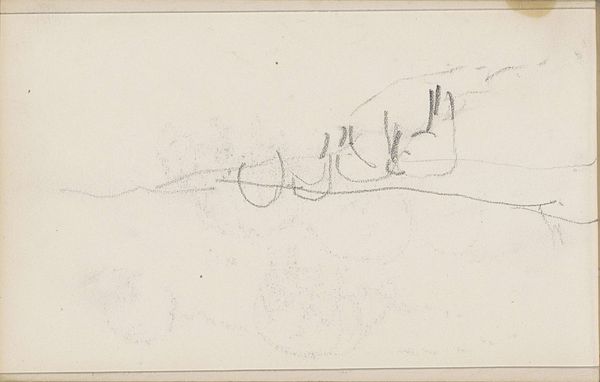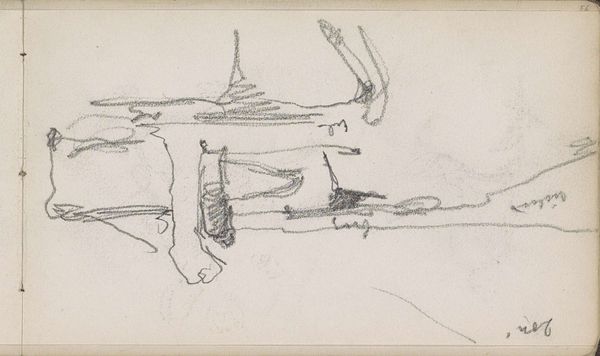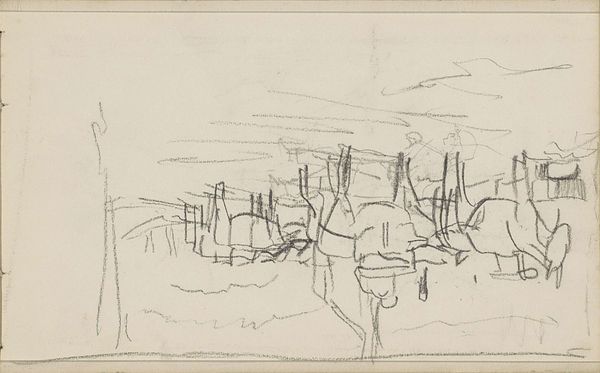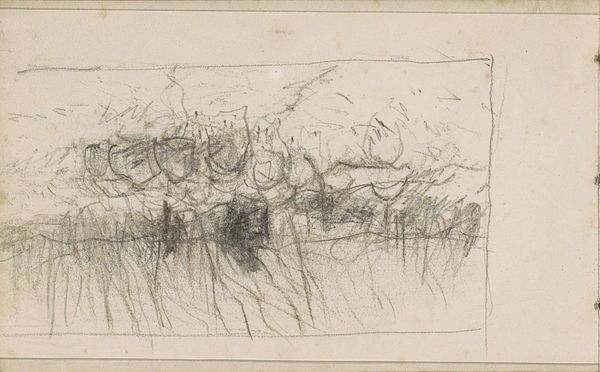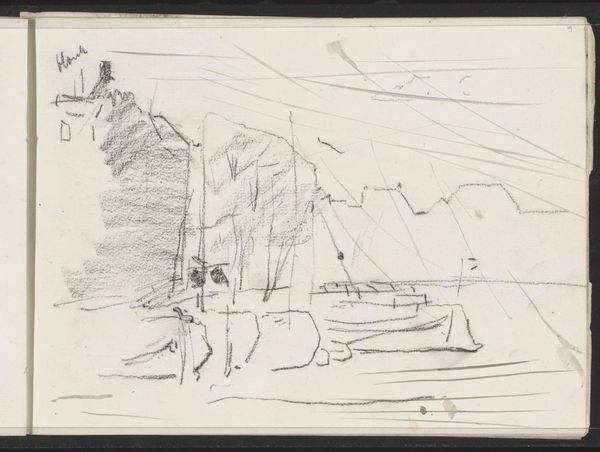
drawing, pencil
#
drawing
#
pencil sketch
#
landscape
#
pencil
#
realism
Copyright: Rijks Museum: Open Domain
Curator: Anton Mauve created this pencil sketch, “Sheep near a Hut with a Pointed Roof,” sometime between 1848 and 1888. It’s currently held here at the Rijksmuseum. Editor: Immediately striking is the subdued, almost ethereal quality of the piece. The stark lines create a feeling of gentle transience, like a memory fading at the edges. Curator: Indeed, Mauve's expert use of pencil lends itself to this ephemeral feeling. The composition, too, reinforces this. We can see the artist is deploying a limited range of tonal values to describe this landscape, this almost makes the work dream-like. How might such a depiction have resonated with contemporary audiences? Editor: Considering the sociopolitical environment of the time, with the rapid rise of industrialization, Mauve’s work could be interpreted as an idyllic representation of the traditional rural life increasingly threatened by modernization. The imagery presents a curated vision that many desired, the sheep represent innocence. Curator: And this focus on the simplicity of form contributes to the subject. The gestural lines that create these soft bodies is really something! What do you feel it tells us? Editor: I see Mauve's concentration on capturing the fleeting moment speaks to a growing yearning for simplicity amidst societal transformation. Artists became increasingly motivated to portray and preserve pastoral traditions that industrial life risked erasing completely. Curator: That’s quite insightful. His artistic style creates not only visual interest but prompts consideration of broader shifts in cultural and societal norms. I will consider it in a broader perspective. Editor: It will allow others to see these pencil strokes as something more potent, something capable of holding and reflecting significant meaning.
Comments
No comments
Be the first to comment and join the conversation on the ultimate creative platform.
